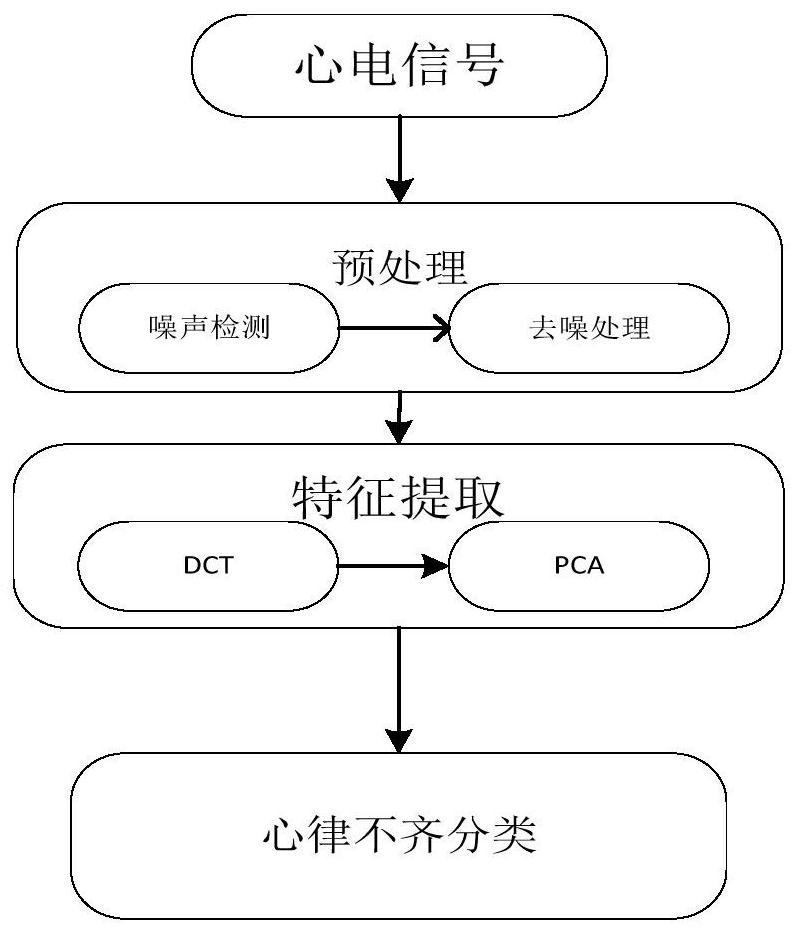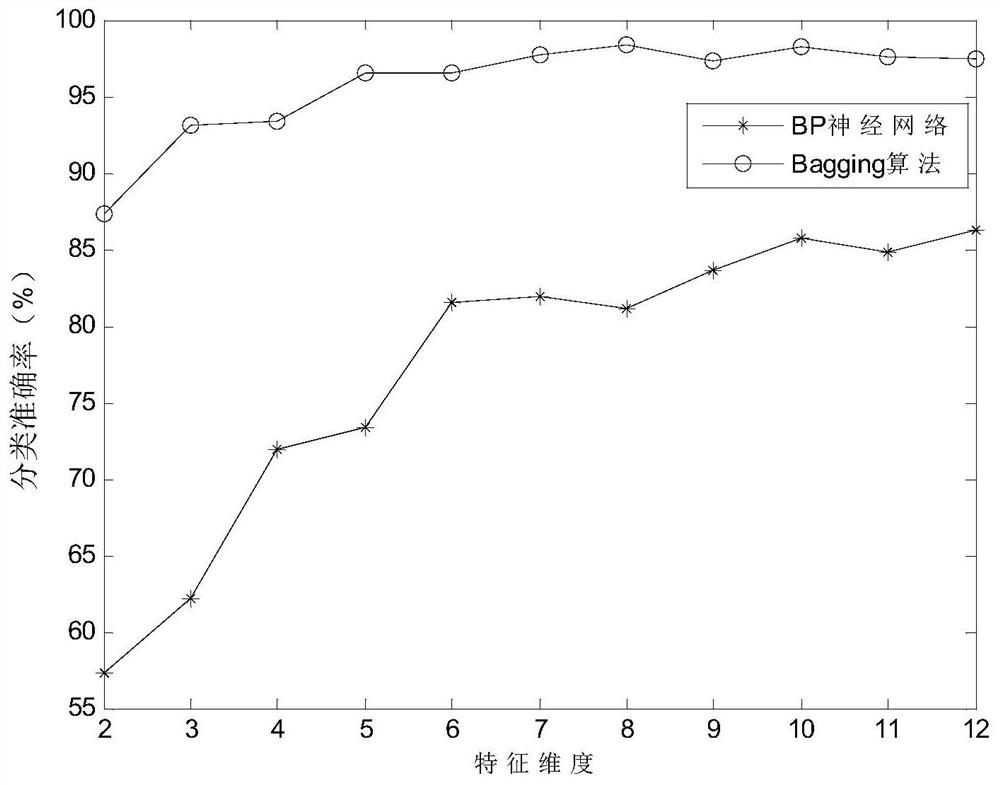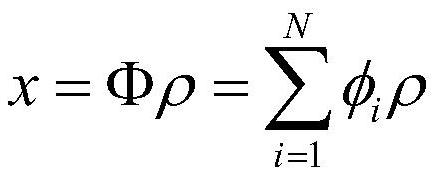Arrhythmia Recognition and Classification Method Based on Sparse Representation and Neural Network
A sparse representation and neural network technology, applied in character and pattern recognition, pattern recognition in signals, instruments, etc., to achieve the effect of reducing noise, improving classification accuracy, and reducing the dimension of features
- Summary
- Abstract
- Description
- Claims
- Application Information
AI Technical Summary
Problems solved by technology
Method used
Image
Examples
Embodiment Construction
[0079] The present invention will be further described below in conjunction with drawings and embodiments.
[0080] like figure 1 As shown, the arrhythmia recognition and classification method based on sparse representation and neural network provided by the present invention comprises the following steps:
[0081] (1) In the preprocessing stage, a sparse representation framework based on dictionary learning is used for noise detection and filtering. This framework mainly includes two parts, the detection of different noises and the filtering of corresponding noises.
[0082] a) In the detection of noise, it mainly detects the common baseline drift, power frequency interference and electromyographic interference in the ECG signal. Baseline drift noise in ECG signal belongs to low frequency noise, while power frequency interference and EMG interference belong to high frequency noise. The specific steps are as follows:
[0083] 1) In this step, a moving average filter is use...
PUM
 Login to View More
Login to View More Abstract
Description
Claims
Application Information
 Login to View More
Login to View More - R&D
- Intellectual Property
- Life Sciences
- Materials
- Tech Scout
- Unparalleled Data Quality
- Higher Quality Content
- 60% Fewer Hallucinations
Browse by: Latest US Patents, China's latest patents, Technical Efficacy Thesaurus, Application Domain, Technology Topic, Popular Technical Reports.
© 2025 PatSnap. All rights reserved.Legal|Privacy policy|Modern Slavery Act Transparency Statement|Sitemap|About US| Contact US: help@patsnap.com



